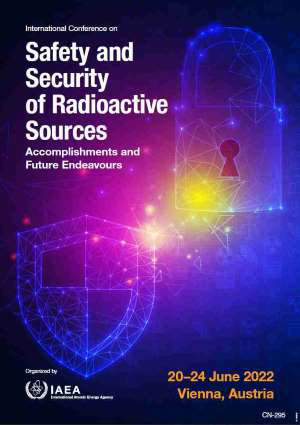Structure, Themes and Topics
The conference programme will consist of an opening session, plenary sessions, technical sessions, poster and interactive content sessions, exhibitions, and a closing session. The opening session will include opening statements delivered by the Conference Presidents and the IAEA.
The plenary sessions will continue with a combination of invited keynote presentations and submitted papers addressing the main themes and topics of the conference.
Each topical session will include presentations and/or panel discussions delivered by participants which will be selected based on the synopses submitted. The conference will also include poster and interactive content sessions, and sufficient time will be provided for discussion and interaction with colleagues.
The final plenary session on the last day of the conference will be dedicated to conclusions and recommendations.
The closing session will include a summary of the main conclusions of the conference, delivered by the Conference Presidents, and closing remarks from the IAEA.
Consistent with the objectives set out above, the overall themes for the conference will be:
- Enhancing safety and security of radioactive sources from cradle to grave;
- Facilitating collaboration among national stakeholders and leveraging existing capabilities for keeping radioactive sources under regulatory control;
- Managing radiological incidents and emergencies involving radioactive sources, including situations with perceived radiological hazard;
- Promoting international cooperation to strengthen safety and security of radioactive sources globally;
- Strengthening sustainability and effectiveness of national regimes for the safety and security of radioactive sources, including sustainability and resilience in unplanned situations (e.g., pandemics and natural disasters).
While the number and scope of the topical sessions will be based on the nature and number of synopses received, it is anticipated that the topical sessions may deal with the subjects listed in the Annex.
Topics:
- Legally binding and non-legally binding international instruments (e.g., Code of Conduct on the Safety and Security of Radioactive Sources) and national legal frameworks;
- Coordination among stakeholders involved in the safety and security of radioactive sources;
- Regulatory infrastructure for the safety and security, including Emergency Preparedness and Response (EPR), of radioactive sources;
- Harmonized regulatory approaches (e.g., authorization, inspection and enforcement processes) for the safety and security of radioactive sources;
- Functions, competencies and effectiveness of regulatory bodies;
- Regulatory requirements for safety and security of radioactive sources and associated facilities, including EPR;
- Graded approach to national regulatory requirements for safety and security of radioactive sources;
- Assessment of current and emerging threats, hazards and risks related to radioactive sources;
- Safety and security assessments of facilities and activities;
- Self-assessment tools for the safety and security, including EPR, of radioactive sources;
- Sustainability and effectiveness of safety and security systems and measures, including emerging technologies;
- Challenges and good practices associated with ensuring the safety and security of radioactive sources throughout their life cycle;
- Safe and secure management of disused sealed radioactive sources, including field operations, new technologies and end-of-life-cycle management options;
- Successes and challenges in transitioning from source-based to non-source-based radiation technologies;
- Lessons learned from managing radioactive sources safely and securely during the COVID-19 global pandemic;
- Radioactive sources security and safety by design
- Physical protection systems and measures at facilities
- Information security, including computer security, in relation to radioactive sources;
- Responding to radiological incidents and emergencies involving missing, lost or stolen radioactive sources;
- Radioactive sources out of regulatory control and illicit trafficking prevention;
- Good practices for notification, reporting, exchange of information and requests for assistance in case of radiological incidents and emergencies (e.g, using IAEA’s Unified System for Information Exchange “USIE”);
- Emergency response exercises and their evaluation;
- Raising awareness of industry, civil society, international organizations and other stakeholders about the safety and security of radioactive sources, including sustainability and resilience in unplanned situations (e.g., pandemics and natural disasters);
- Human resources development, knowledge management and networks, education and training;
- Safety culture and nuclear security culture for radioactive sources;
- International cooperation and assistance to enhance the safety and security of radioactive sources;

